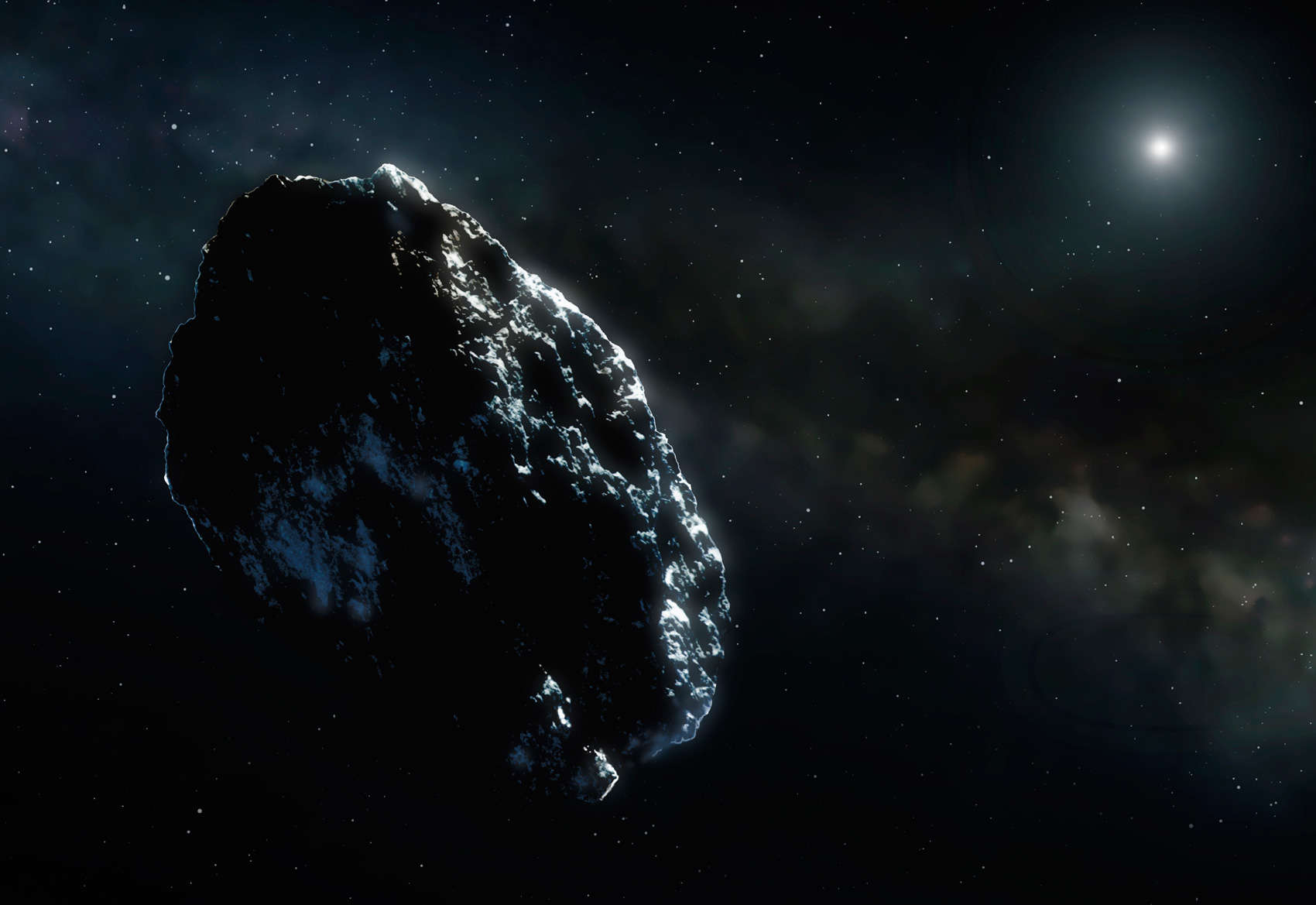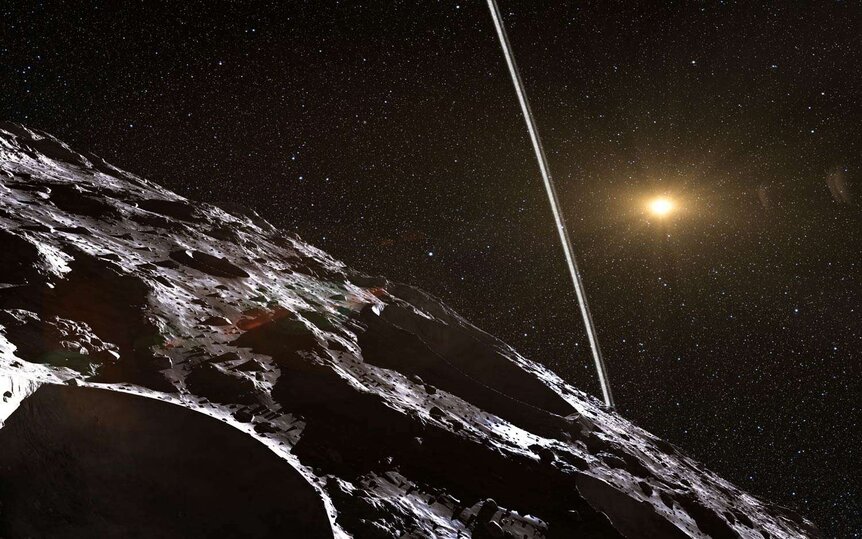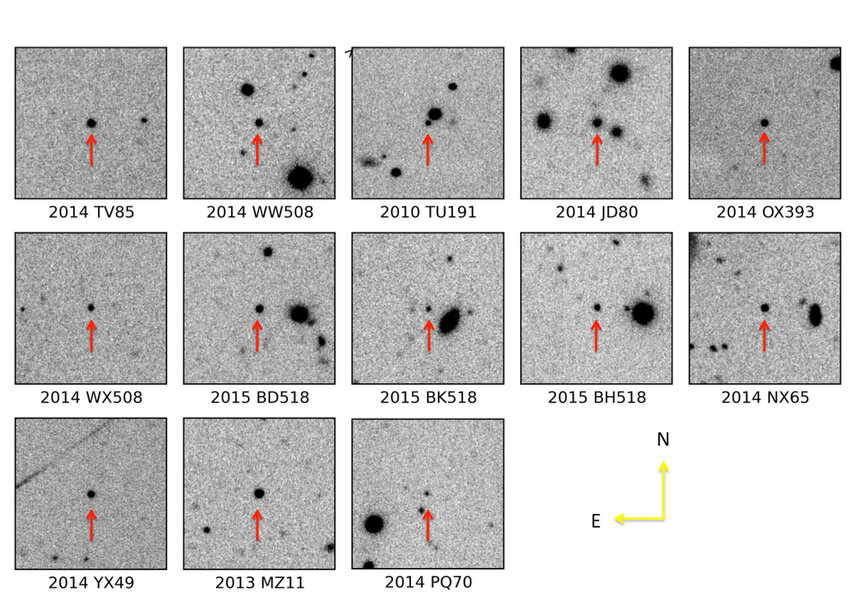Create a free profile to get unlimited access to exclusive videos, sweepstakes, and more!
The case of the Centaurs that didn't bark in the night

Why do some Centaurs suddenly and dramatically increase in brightness while others don't?
Centaurs are odd objects. They are biggish bodies of ice and rock that used to orbit the Sun well beyond Neptune (so at that point they’re called Trans-Neptunian Objects, or TNOs) but, over time, have had their orbits shifted by that giant planet's gravity to drop them closer in toward the Sun. They can get as close to the Sun as Jupiter, but in general have mildly elliptical orbits that take them out to the orbits of Uranus and Neptune.
That's not a safe place to be. The gravity of Saturn, Uranus, and Neptune subtly change the orbits of these objects, and after roughly 10 million years or so they either hit one of these planets, are dropped even closer to the Sun such that Jupiter dominates their orbits, or they get ejected from the inner solar system entirely. This makes them transitional objects, neither inner solar system comets nor TNOs. The first one discovered was named Chiron, who was a half human, half horse Centaur in Greek myth. The name is appropriate, being half one thing and half another, but not fully either.
Some Centaurs are seen to be active; that is, actively shedding gas and dust like a comet. For comets that's usually due to water ice turning into a gas when they get inside Jupiter's orbit, but Centaurs are too far from the Sun for this to be the case. Sometime this could be due to even less stable ices like carbon monoxide (CO) or carbon dioxide (CO2)*.
Another idea is that it’s due to amorphous water ice crystallizing. We’re used to water ice being a crystal (like a snowflake) but in the outer solar system where temperatures are extremely low, water ice can take on an amorphous structure, uncrystallized. If an object approaches the Sun (getting less than about 2 billion kilometers) that amorphous structure can crystallize, which was thought to release heat, and that’s what activates the object.
You might first think the best way to figure this out is to look at Centaurs that are active and see what they’re like. But really you also want to look at ones that are inactive, quiet. That way you can see what's similar and, probably more importantly, what's different between them. Are the orbits different? Do active ones tend to get closer to the Sun, and if so how much? If you’re looking for trends you want to cover as much ground as possible.
So a team of astronomers decided to take a look at a passel (a herd?) of Centaurs and see what there was to see. Their selection criteria were pretty simple: They wanted to look at ones with well-determined orbits that were also near perihelion (closest approach to the Sun) and in a position and bright enough to be observed by various telescopes, including the monster Gemini-North (an 8.1-meter in Hawaii) and the Dark Energy Camera in Chile. They combed through a database of objects found by Pan-STARRS (a survey ‘scope in Hawaii) and found 13 Centaurs that met all their criteria.
These objects range in size from 5 kilometers in diameter to 120, and some get nearly as close to the Sun as Jupiter, while most are between Saturn and Uranus.
Of the 13, five were close enough to the Sun when observed that amorphous water ice should crystallize, so you’d expect them to be active, while the rest were too far out and should be quiet.
Here's where things get weird: All of them were quiet. Every one.
Now, it’s possible the closer ones were active but at a level too low to be seen. If that’s the case, though, the levels had to be very low indeed, when it was expected they’d be pretty active. So what gives?
It seems clear that just being warm enough is not sufficient to trigger activity! That right away is a pretty interesting result. There must be something else going on then to make Centaurs active. What can it be?
One idea is that when amorphous ice crystallizes it releases energy in the form of heat, perhaps enough to trigger activity. But that doesn’t seem to be the case here either, since no activity was seen. There’s been some work indicating that if enough gas like carbon dioxide is trapped in amorphous ice then crystallization will release that gas but will actually absorb heat. That makes knowing when and where a Centaur will be active more complicated.
It’s possible these Centaurs have been close enough to the Sun for long enough that their activity has quieted. When they first got kicked into these orbits from farther out they got active, but have since used up the ices on their surface and are now settled down.
That fits with another thought, that a sudden change in orbit can trigger activity, maybe by passing close enough to one of the giant outer planets that the orbit drops the Centaur closer to the Sun by a bit. That can trigger landslides, exposing pockets of ices that can then turn to gas. All but one of the Centaurs observed have kept pretty far from the big planets, so that at least fits. One of them, called 2014 PQ70 had a sudden shift in orbit of about 75 million kilometers about 50 years ago or so (determined by backtracking the position of the object in time given its orbit now). Again, like the others, it’s inactive, so the astronomers note we should keep an eye on it to see if does have any outbursts in the future.
Clearly, it's not just where a Centaur is but where it's been and how that’s changed that are important here too. Orbital evolution may be the key trigger in generating activity.
Coincidentally, a different team of astronomers just found that Chiron, the first Centaur, underwent a burst of activity that started in early February 2021 and lasted until at least June. Interestingly, this happened when it was at aphelion, its farthest point from the Sun, about 2.8 billion kilometers out, nearly as far as Uranus! It's not clear why.
What is clear is that these are complex objects with a lot going on, and not the simple chunks of rocky iceballs as first presumed. That happens a lot: We think some object or class of objects is simple and perhaps easily understood, but then when studied more deeply it turns out they’re vastly more complicated then we thought.
And that makes them vastly more interesting. If anything is clear here, it’s that we need to study Centaurs a lot more closely.
*Ices that turns to gas at relatively low temperatures (like water) are called volatiles. Ones like CO and CO2 that do this at much lower temperatures are called supervolatiles, which is something I learned while writing this article! I love it when that happens.





























